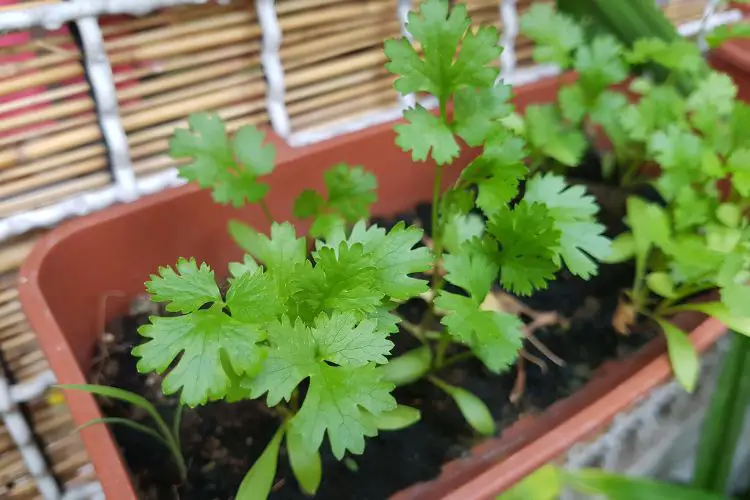Explore effective methods for growing cilantro at home. Learn essential tips on planting, caring for, and harvesting this versatile herb to enhance your culinary dishes with fresh, flavorful cilantro.

Understanding Cilantro
Cilantro, scientifically known as Coriandrum sativum, is a versatile herb that is widely used in various cuisines around the world. It is also commonly referred to as coriander in some regions. The plant is known for its bright green, delicate leaves and its pungent, citrusy flavor. Both the leaves and the seeds of the cilantro plant are edible and used in cooking.
Varieties of Cilantro
There are several varieties of cilantro, each with its own unique characteristics. Some popular varieties include Slow Bolt, Santo, and Calypso. Slow Bolt cilantro is known for its slow-bolting nature, which means it takes longer to go to seed, allowing for a longer harvest period. Santo cilantro is a fast-growing variety with a high leaf-to-stem ratio, making it ideal for culinary use. Calypso cilantro is a relatively new variety that is known for its strong, robust flavor.
Culinary Uses of Cilantro
Cilantro is a staple herb in many cuisines, including Mexican, Indian, Thai, and Middle Eastern. It is commonly used to add flavor to salsas, guacamole, curries, soups, and salads. The seeds of the cilantro plant, known as coriander seeds, are also used as a spice in cooking and baking.
Selecting the Right Location
Ideal Climate for Growing Cilantro
Cilantro thrives in cool weather, making it well-suited for spring and fall growing seasons. It prefers temperatures between 50°F and 85°F (10°C to 29°C). If you live in a region with hot summers, consider planting cilantro in a partially shaded area to protect it from the intense midday sun.
Sunlight Requirements

Cilantro requires full sun to partial shade. It should receive at least 4 to 6 hours of sunlight per day for optimal growth. In hot climates, providing some afternoon shade can help prevent the plant from bolting too quickly.
Soil Conditions for Cilantro
Cilantro grows best in well-draining, fertile soil with a slightly acidic to neutral pH level (6.2 to 6.8). Amending the soil with organic matter, such as compost, can help improve its texture and fertility, providing an ideal growing environment for cilantro.
Planting Cilantro Seeds
When to Plant Cilantro Seeds
Cilantro is typically grown from seeds rather than transplanted seedlings. It is best to sow the seeds directly into the ground or a container as cilantro has a delicate root system that doesn’t transplant well. Plant cilantro seeds in the spring, 2 weeks before the last frost date, or in the fall for a second harvest.
How to Prepare the Soil
Before planting cilantro seeds, prepare the soil by loosening it to a depth of 8 to 10 inches. Remove any debris, rocks, or weeds, and incorporate a balanced fertilizer into the soil according to the manufacturer’s instructions.
Spacing and Depth for Planting Cilantro Seeds
Sow the cilantro seeds about 0.25 inches deep and space them 6 to 8 inches apart. Gently cover the seeds with soil and water them thoroughly. Keep the soil consistently moist until the seeds germinate, which typically takes 7 to 10 days.
Caring for Cilantro Plants
Watering Needs of Cilantro

Cilantro plants require regular watering, especially during dry periods. Keep the soil evenly moist, but not waterlogged, to prevent the plants from wilting. Mulching around the plants can help retain soil moisture and regulate the soil temperature.
Fertilizing Cilantro Plants
Fertilize the cilantro plants with a balanced, water-soluble fertilizer once a month to support healthy growth. Avoid over-fertilizing, as this can lead to excessive foliage growth with less flavor.
Managing Pests and Diseases
Cilantro is relatively pest and disease resistant, but it can occasionally be affected by aphids, whiteflies, and powdery mildew. To deter pests, consider companion planting with beneficial insect-attracting plants such as dill, fennel, and yarrow. Ladybugs are natural predators of aphids and can help keep their population in check.
Harvesting and Storing Cilantro
When to Harvest Cilantro
Cilantro leaves can be harvested once the plants reach 6 inches in height. Harvesting should be done in the morning when the essential oils that give cilantro its flavor are most concentrated.
Proper Harvesting Techniques
To harvest cilantro, use clean, sharp scissors or garden shears to snip off the outer leaves, leaving the inner leaves and growing point intact. This encourages continuous growth and prolongs the harvest period.
Storing Cilantro for Extended Use
To store cilantro, place the freshly harvested stems in a jar of water, similar to a bouquet of flowers, and cover the leaves loosely with a plastic bag. Store it in the refrigerator, and change the water every few days. Alternatively, cilantro can be dried or frozen for long-term storage.
Tips for Growing Cilantro Successfully
Companion Planting with Cilantro
Cilantro is known to attract beneficial insects such as ladybugs, which prey on aphids and other harmful pests. Planting cilantro alongside other herbs and flowers, such as dill, chamomile, and alyssum, can create a diverse and insect-friendly garden environment.
Common Mistakes to Avoid When Growing Cilantro
Avoid planting cilantro in compacted or waterlogged soil, as this can lead to poor growth and root rot. Additionally, be mindful of overwatering, as cilantro plants are susceptible to damping off and other fungal diseases in overly moist conditions.
Extending the Cilantro Growing Season
To extend the cilantro growing season, consider succession planting every 2 to 3 weeks to ensure a continuous harvest. Additionally, providing some shade during the hottest part of the day can help prevent the plants from bolting prematurely.
By following these comprehensive guidelines for growing cilantro, home gardeners can cultivate healthy cilantro plants and enjoy an abundant supply of this flavorful herb for their culinary endeavors.
